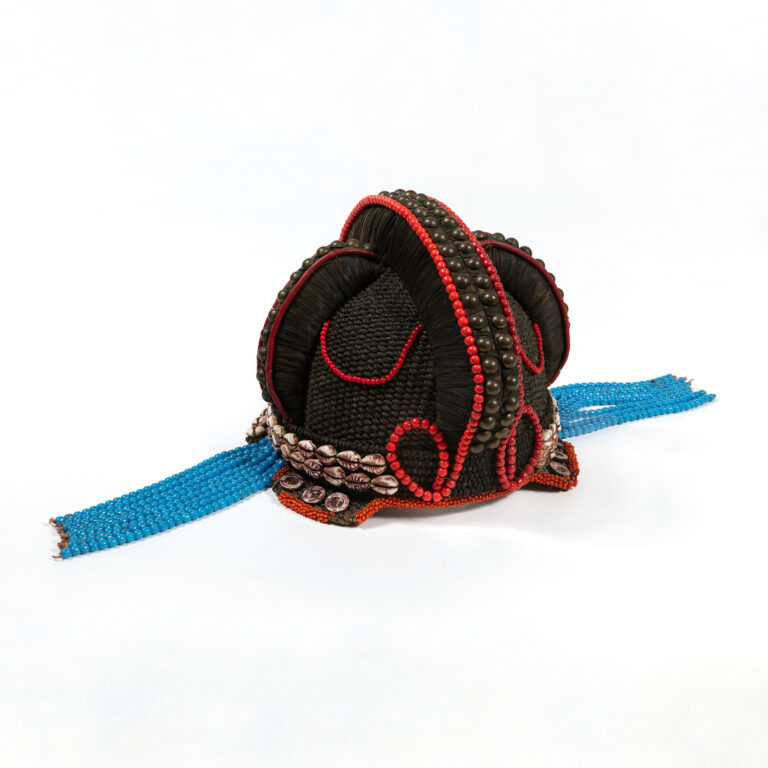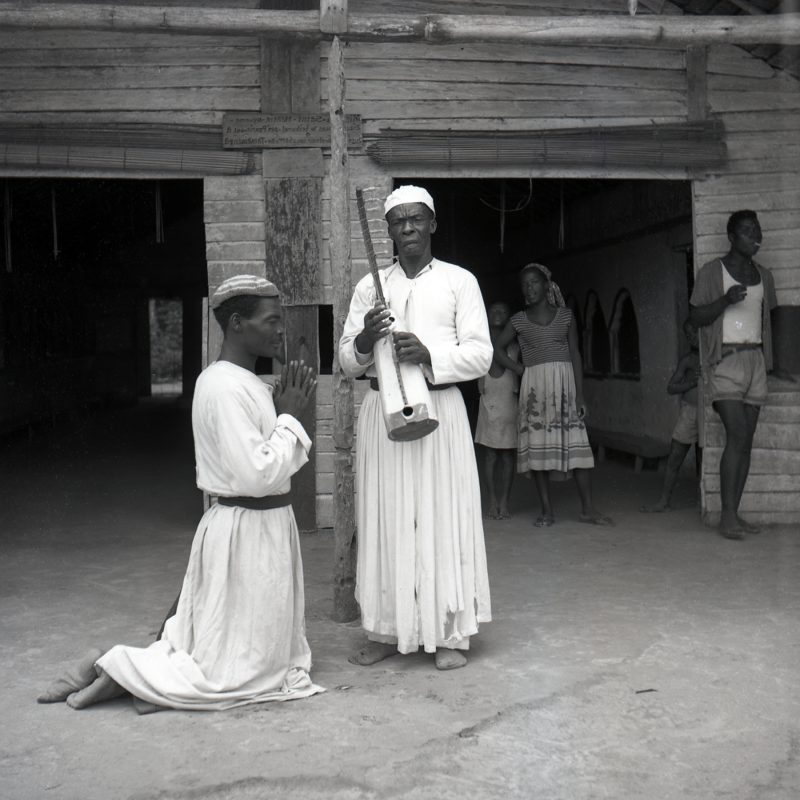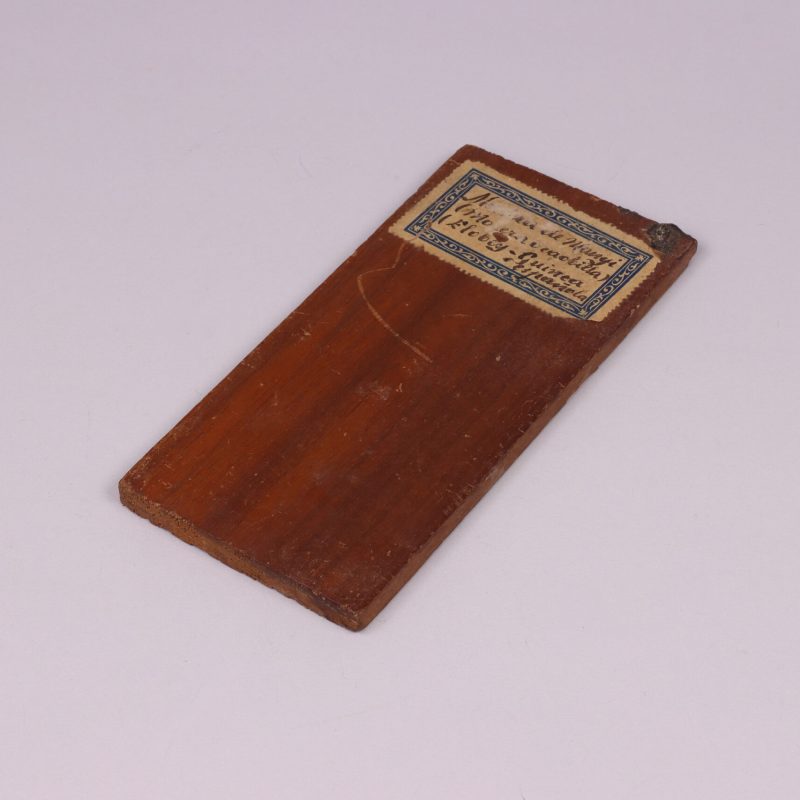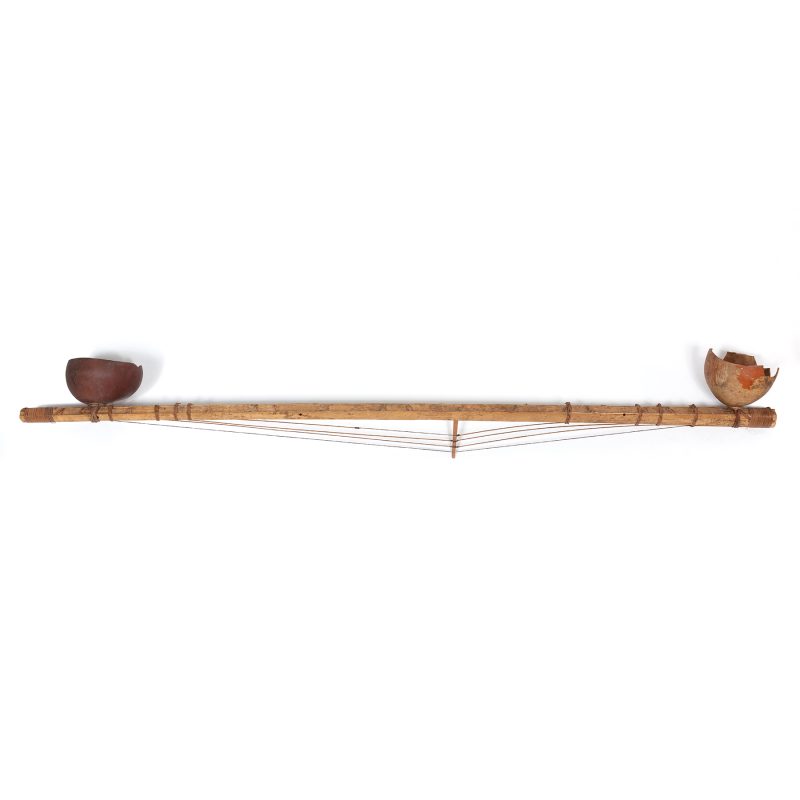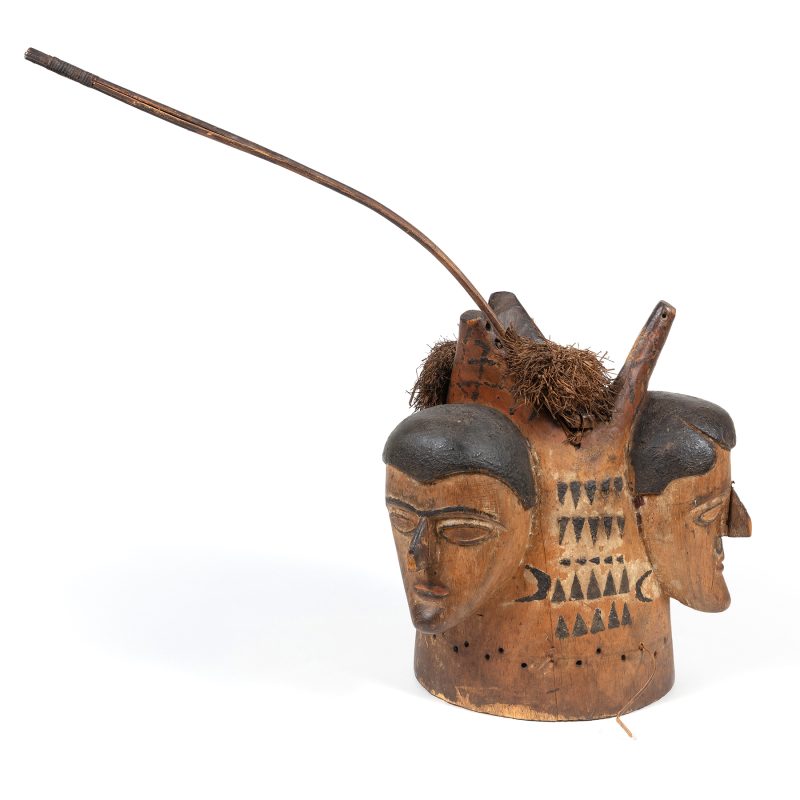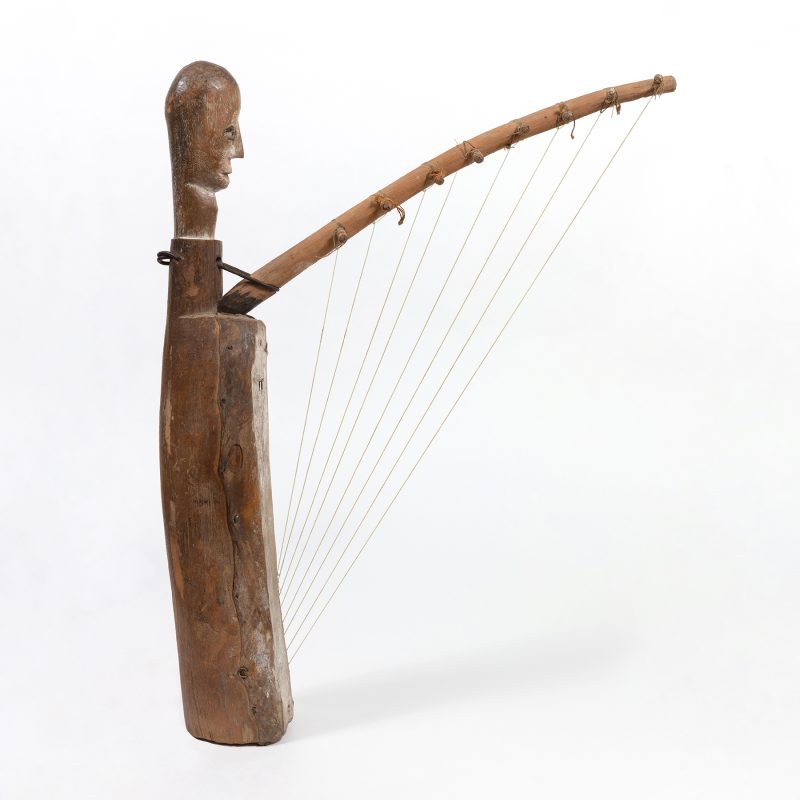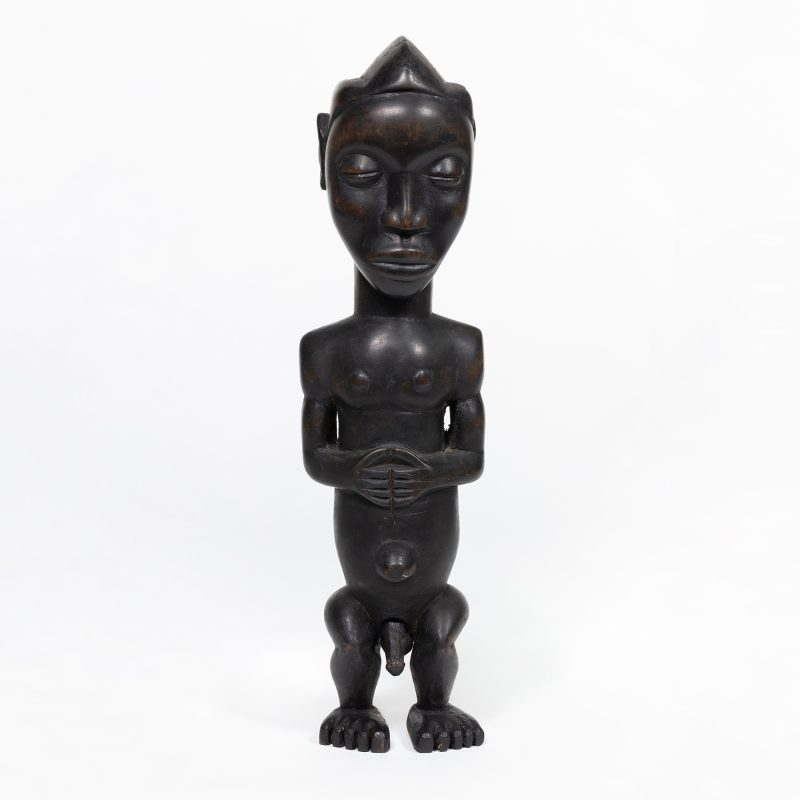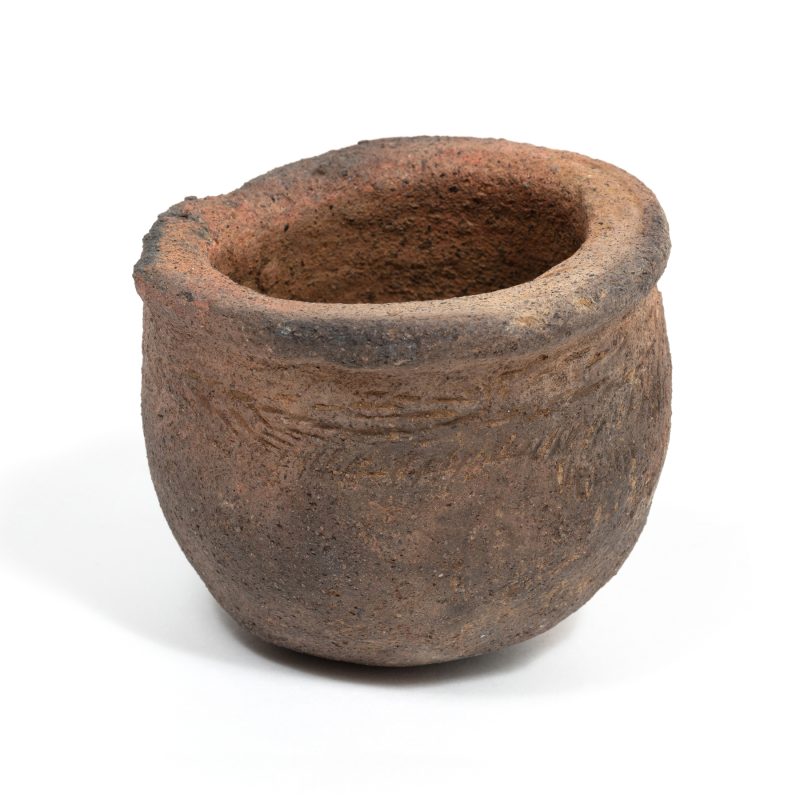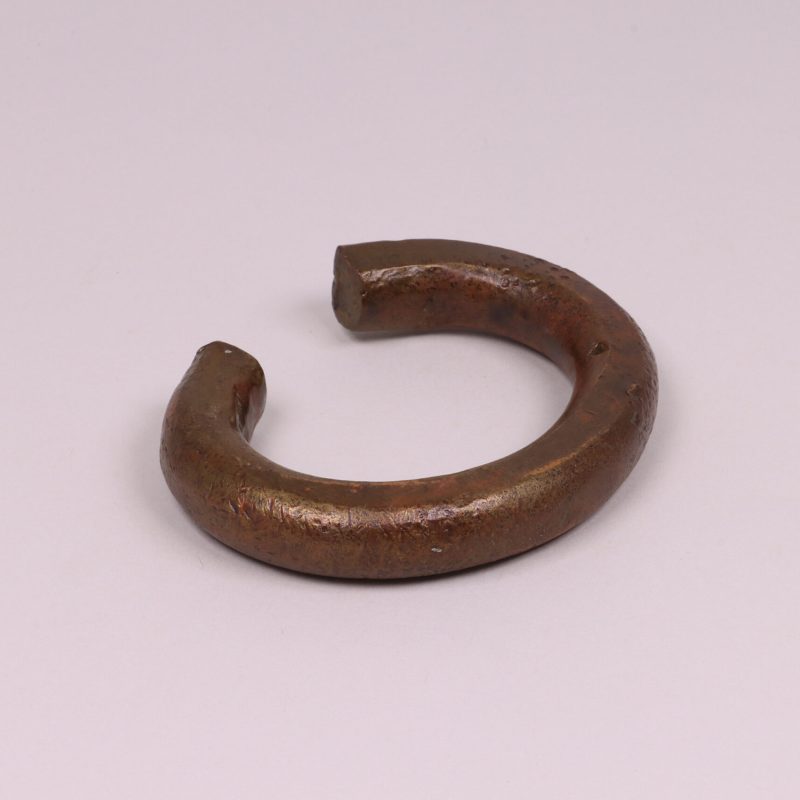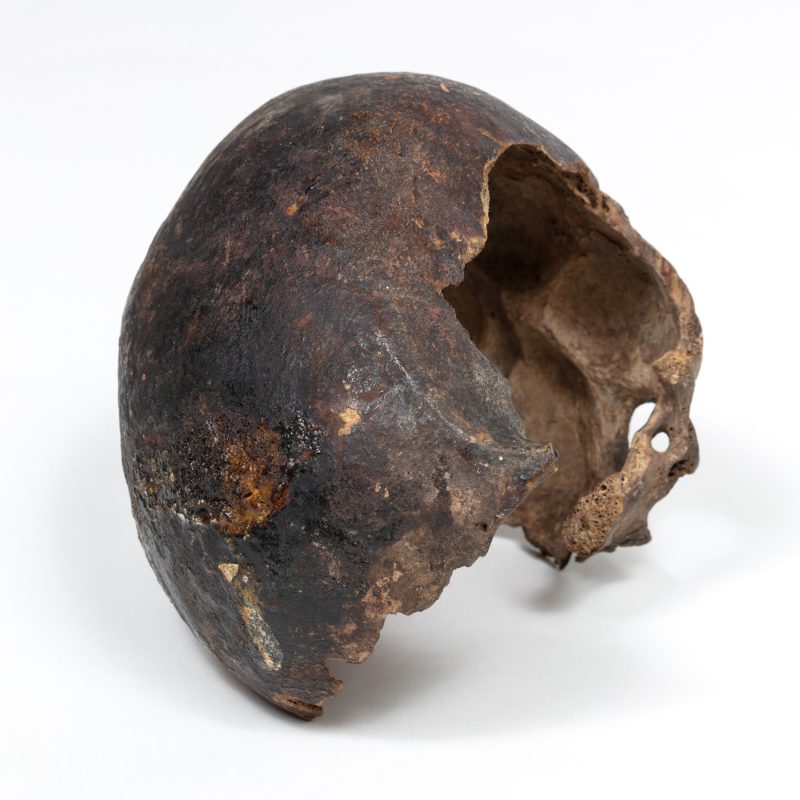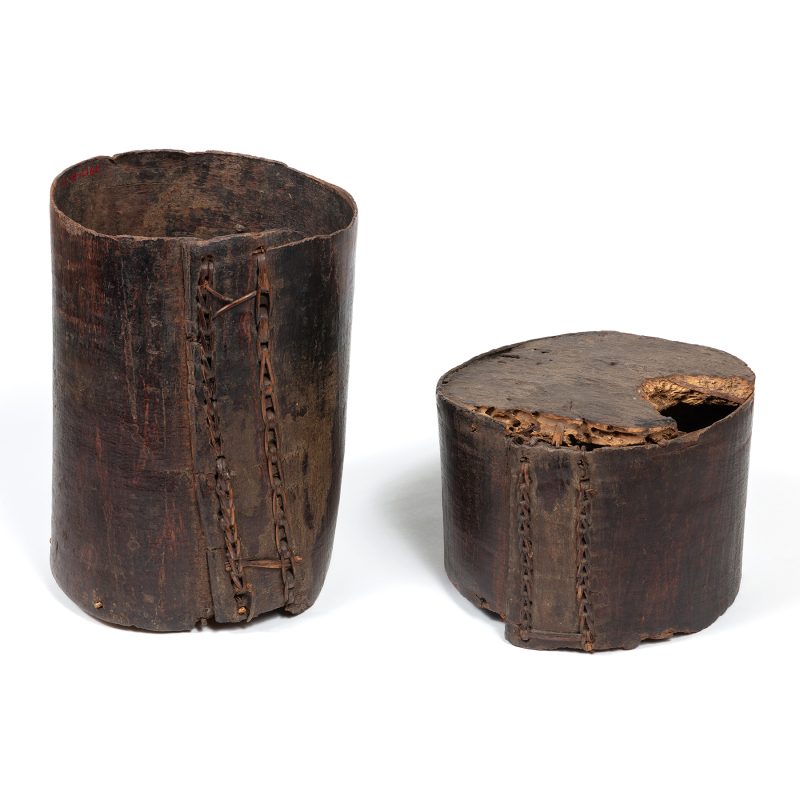Summary of results
This is a hat bought by Jordi Sabater Pi from Martin Angue in Bidjabidjan (Kié-Ntem, Equatorial Guinea) between May and June 1961. It belongs to a series of five hats made and bought in Angue, with dossier number MEB 320.
Chronological reconstruction of provenance
This hat was purchased by Jordi Sabater Pi between May and June 1961 on one of the expeditions carried out for the acquisition of ethnological material, as part of his work as curator of the Ikunde Centre for Conservation and Animal Acclimatization. Specifically, it was purchased from the same hatmaker, Martin Angue, in Bidjabidjan (Kié-Ntem, Equatorial Guinea). In the documentation kept in the dossiers, we find invoices for the acquisition of five male and five female Fang hats (dossier MEB 320), but from the information available it cannot be deduced to which of the five hats acquired each one corresponds. The price paid for the hats was around 900 pesetas (MEB L128 04 02).
In addition to this, in one of the dossiers we find a letter from Sabater Pi to Panyella on 9 July 1961, in which he says the following: ‘taking advantage of the space in one of the boxes of the shipment of animals that we sent to the Zoo yesterday, I included in one of the two “Fang” hats of those acquired recently. One of them, the one with four ridges, is a male Bikong-meñí, and the other is a female hat called Nsusúm. I hope you like them and I will try to send you the others when I can’. He also mentioned that he would try to avoid the tax obligations for the shipment: ‘You know that now we have very little money left, I reserve it for films and photographs, also think that now the Government’s permission, for the shipment, is taxed with 500 pesetas (‘Parafiscal levies’ [sic]), I will try to avoid it, of course’. At the end of the letter, we find a handwritten note confirming that it has been sent free of charge: ‘This shipment has been made in such a way that it has been sent free of postage, I am referring to the weight of your hats’ (MEB L128 48 02).
Estimation of provenance
This hat was purchased from Martin Angue in Bidjabidjan (Kié-Ntem, Equatorial Guinea).
Possible alternative classifications
No alternative classifications are apparent. However, it would be advisable to specify the specific place of acquisition (Bidjabidjan, Kié-Ntem, Equatorial Guinea), the manufacturer and seller (Martin Angue), and to correct the date of purchase (May-June 1961).
Complementary sources
Archives:
MEB L128 04 02. Referència: MEB (1959-61). Factures peces. Expedició Guinea (L128 04 02). Arxiu del Museu Etnològic.
MEB L128 48 02. Referència: MEB (1961-63 i s/d). Correspondència IV. Jardí de Bindung (L128 48 02). Arxiu del Museu Etnològic.

